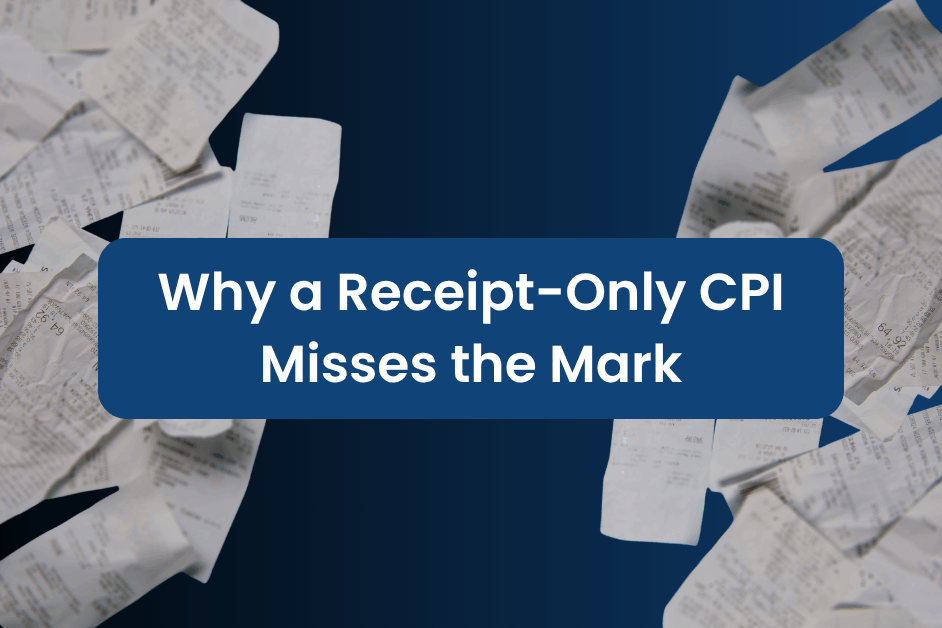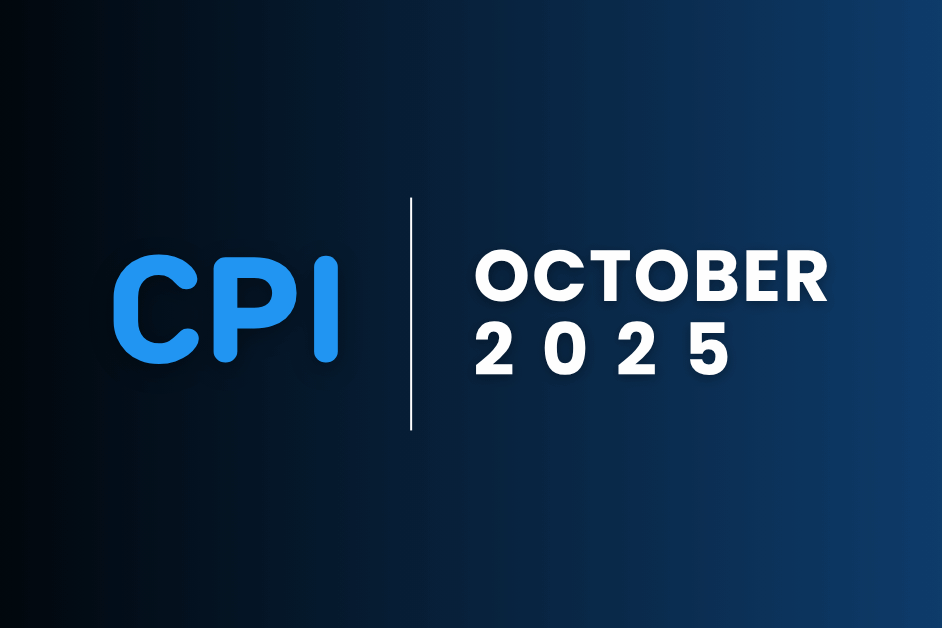Insights from OpenBrand’s April 2025 Webinar
With new tariffs taking effect in April 2025, businesses across consumer durables categories are reassessing pricing strategies, supply chains, and consumer dynamics.
As Chief Economist at OpenBrand, my focus is on empowering businesses to confidently navigate market volatility through data. Right now, that means understanding the combined impact of rising inflation and new tariffs, two forces reshaping the landscape for durable goods.
During our April 2025 webinar, I walked attendees through what the data is actually telling us about the impact of tariffs and inflation. Using OpenBrand’s proprietary Consumer Price Index, shopper survey data, and our neural network-powered forecasting model, we laid out a data-driven picture of where prices are moving, which categories are feeling the most pressure, and how consumers are responding.
Watch the webinar in full above or keep reading below. This blog recaps the key insights from the session, as well as a framework for how to evaluate impact moving forward, delivering a clearer and grounded understanding of how to think about tariffs, refine strategies, and plan with greater confidence in the months ahead.
CPI and Inflation: March 2025 Data Review
At OpenBrand, we’ve built a proprietary Consumer Price Index for Durable and Personal Goods (CPI-DPG) that takes CPI data a step further than what’s available through the BLS and BEA—giving a more nuanced look at the consumer durables and personal goods categories.
Our CPI closely tracks BLS and BEA indexes, but with higher frequency and added detail. Not only can we track inflation at the category-level, but we can isolate price changes to determine if they were driven by list prices, discounting, or frequency of promotions, something federal data does not currently provide.
Highlights from the March 2025 CPI data
- Overall CPI in durables and personal goods rose modestly, from 0.1% in February to 0.2% in March. While that’s technically a doubling, the increase remains relatively mild.
- Appliances led the inflation trend, jumping from 0% to 0.4% month-over-month. This is the first clear signal of tariff-related pressure.
- Other categories remained stable:
- Communication, Home Improvement, and Personal Care showed flat or decelerating trends.
- Recreation continued its long-term rise, mostly driven by voice speakers and headphones, rather than tariffs. As with all the categories we track, OpenBrand is continuously monitoring for tariff impact in this space.
In summary, inflation in durables isn’t widespread yet, but appliances are showing signs of an inflection point, and that’s worth watching closely.
If you’re looking for more CPI data, see the full March 2025 CPI report.
Consumer Sentiment Is Shifting—But Not Collapsing
Using our now-daily MindShare consumer survey, we’ve been tracking how the market is responding (and adjusting spending plans) to the evolving tariff environment.
While many shoppers remain steady in their behavior, there are signs of growing caution.

Key shifts from March to April
- In early March, 53% of consumers said tariffs would not affect their purchase plans
- By early April, that number dropped to 48%
- At the same time, those delaying purchases rose from 13% to 18%
- Early purchasing behavior (to beat potential price hikes) also increased by over 3 percentage points
This shows that consumer concern is increasing, even if behavior hasn’t drastically changed.
What we are seeing is that tariff sensitivity grows with purchase volume.
- Among consumers buying a single product, 54% reported no change in behavior
- Among those buying 20+ products, two-thirds reported being impacted by tariffs
- Higher-volume shoppers were more likely to:
- Delay purchases
- Buy early
- Prefer American-made products

For more consumer sentiment insights around which categories can expect to see any impact based on consumer intent, the rising “buy American” sentiment, and where consumers are most likely to delay purchases, watch the full webinar.
Forecast Expectations for 2025: Inflation, Shipments, and Retail Sales
Our forecasting solutions use a neural network model to forecast price, shipment, and retail sales trends across durable goods. These models are fast, flexible, and accurate, with mean absolute percentage error (MAPE) rates as low as 1.4% in blind tests.
For the webinar, we took a look at a few specific areas, with the caveat that we can forecast data across a wide breadth of categories and areas—including forecasts specific to your business. You bring the data, we forecast it. For more details, request a customized preview of what our forecasting can do.
We’re currently running two Baseline and Pessimistic scenarios, which draw the following forecast assumptions:
- Many (base) vs. few (pessimistic) trade deals get finalized in 2025
- Inflation continues downward trends vs. re-acceleration
- Deportation moderates vs. increase to levels that hurt labor supply and consumer demand
- Treasury yields fall vs. increase
- Employment growth continues vs. slows or turns negative
Here are a few key highlights of what we’re seeing from both forecasts:
Durable Goods Shipments
- Short-term pull-forward leads to a temporary bump in a pessimistic scenario
- Longer-term: ~2% drop in shipments vs. baseline by year-end
Pricing
- 3–5% price growth expected early in the year
- In the pessimistic case, inflation rises short-term but gives way to deflationary effects later in the year due to weaker demand
Retail Sales
For our retail sales forecast, we looked specifically at the Autos & Gas market.
- Growth continues even in the worst-case scenario
- Baseline: +2.7% YoY
- Pessimistic: +1.2% YoY
- Roughly a 150 basis point hit to sales growth under adverse conditions
The bottom line: Even in a more volatile scenario, we do not forecast a recession, and we expect retail sales to continue growing—albeit at a slower rate. These forecasts give leaders the flexibility to plan across multiple outcomes, rather than react to headlines.
How Businesses Should Evaluate Tariff Impact: A Framework
Now, what does this all mean for your business? How do you prepare for impact?
Tariffs can be complicated, but making sense of their potential impact doesn’t have to be. During the webinar, I shared a simple framework that businesses can use to evaluate how tariffs may influence pricing for specific products or categories.
The framework is built around assessing the impact tariffs might have on your business using four simple questions:
- Is it imported from a high-tariff country?
- Is it a high-margin or low-margin product?
- Is it a raw input, wholesale, or retail product?
- Do you expect the tariff environment to be short-lived or long-term?
You can get access to the framework we created now.
This framework isn’t about guessing; it’s about disqualifying assumptions that don’t apply to your product and focusing your analysis where it matters. Use it to evaluate where your pricing pressure may come from and what kind of response is most appropriate.
For a tariff 101 explanation, as well as a visual walkthrough of how to think about this framework, check out the webinar starting around 19:00.
Final Takeaways: Clarity Through Data
If there’s one thing I hope attendees took away from the webinar—and readers take from this recap—it’s that not all volatility is unmanageable. Yes, tariffs are creating pressure. Yes, inflation is moving. But with the right data, we can separate noise from real impact and plan accordingly.
Here’s what the data told us this month:
- Inflation is rising modestly, with appliances showing the first clear signs of tariff impact.
- Consumers aren’t panicking, but they are adjusting—especially in big-ticket and high-volume categories.
- Forecasts suggest slower growth, not contraction, even under pessimistic trade scenarios.
- And we now have a simple, practical framework to assess where pricing exposure is most likely.
As we move forward, I’d encourage teams to stay close to the data—especially by category—and to use it to inform strategy rather than react to headlines. If you need help doing that, we’re here.
Forecast Preview: See the data for your market
If you’d like a personalized look into what the current tariff environment means for your business, request a forecast preview below.
The goal of this preview would be to:
- Help you understand how tariffs may affect your specific products
- Review category-level pricing and shipment forecasts
- Get real-time data to guide pricing or promotion strategy
📩 Have a specific question you need answered? Ask our analysts for 1:1 analysis support or reach out to us at winshare@openbrand.com.
Let’s take the guesswork out of what’s next.
Ralph McLaughlin
Ralph McLaughlin is Chief Economist at OpenBrand, bringing nearly two decades of experience in economics, data analytics, and forecasting. His expertise spans industrial economics, applied econometrics, and housing market dynamics. Previously, he served as Chief Economist at Trulia and Haus, Deputy Chief Economist at CoreLogic, and Senior Economist at Realtor.com. Ralph held academic appointments at USC, San Jose State University, and University of South Australia. He earned a PhD in planning, policy, and design from UC Irvine and a BA in geography and regional development from the University of Arizona. Ralph is also an FAA-certified commercial pilot and instructor.
Related blogs
Prime Day 2025 for Durables: Shopper Intent, Promotions & Where to Focus
Prime Day 2025 broke the mold. For the first time, Prime Day ran four full days, spanning July 8–11, twice the usual length, and emerged as Amazon’s…
Related blogs
Consumer Price Index: Durable and Personal Goods | November 2025
This is the December 2025 release of the OpenBrand Consumer Price Index (CPI) – Durable and…
Home Depot Market Share Breakdown: Q3 2025 Earnings Call Analysis
Inside the Home Depot Q3 2025 Earnings Call Home Depot’s Q3 2025 earnings call confirmed solid…
Avoiding the Pitfalls of Receipt-Only Inflation Measures With a Mosaic-Based CPI
The Takeaway: Receipt-only data creates an incomplete and biased view of inflation due to…
Consumer Price Index: Durable and Personal Goods | October 2025
This is the November 2025 release of the OpenBrand Consumer Price Index (CPI) – Durable and…






